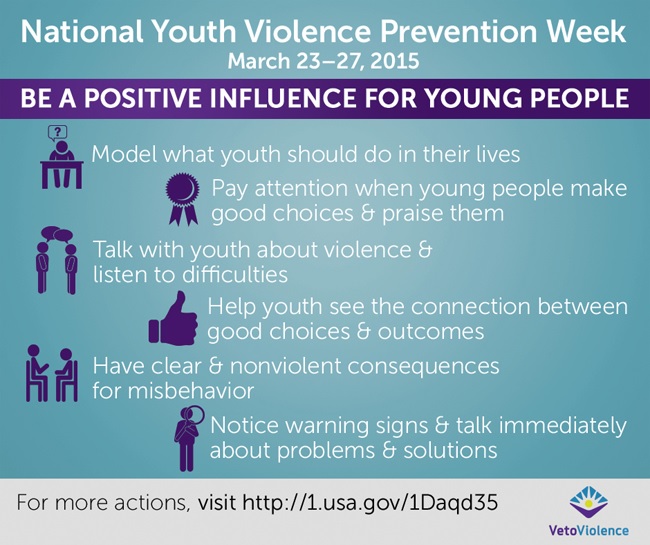Digital Receipt #8


TR 2:00-3:15pm | [email protected] | https://us02web.zoom.us/j/82719242667?pwd=aGlZQzR0a2p4VWhnNEM5RzZMU3ZGQT09

We can’t always blame technology for ruining the writing style of this generation. Technology has made it easier for this generation to express their feelings in fewer words than a whole paragraph. How does the teacher differentiate if a student’s writing is terrible due to the use of social media or not?
Teresa Calcano
Jesse Rice-Evans
ENGL 110
Dec. 8, 2022
Youth Violence: The Motives and Solutions
Their smiles burst as they ran into the playground. Innocence is showing at its finest. Then a gunshot is heard in the air a split second later. They duck down, trembling in fear, wondering if this is their last day. The world is not perfect for kids. When they do not have a home or a role model to rely on, the children have no choice, instead to adapt to the dreadful environment. Youth Violence has been a problem everywhere and brings disappointment and fear to families. School shootings, bullying, abuse, and gangs are examples of how this has not changed. Some people believe solving violence is doomed, but slowly we can protect these kids from the consequences of violence by finding the root of the problem and telling solutions.
The first cause of youth violence is the community in which kids live. Communities influence youth on their values and the decisions they make in life. Halliday and Graham state, “Adolescents who were exposed to higher levels of community violence also engaged in higher levels of violent activity, associated with more deviant peers, and adhered more strongly to an aggressive cognitive style” (396). A quote like this supports my thesis since it explains that children who live in violent areas can get involved in the wrong friendship groups and be more aggressive. Therefore, living in a poor neighborhood is one of the many causes of youth violence.
Similarly, to the environment, home is as important as well, and parental guidance needs to be used right. Therefore, having a bad role model to look up to can direct violent behavior. “One certain pathway is through modeling: When children are exposed to violence in the home, they come to see violence as relatively more acceptable, and they are more likely to resort to violence to solve problems. This is often referred to as the “cycle of violence,” and there is good evidence that the acceptability of violence in interpersonal relationships is often carried from one generation to the next” (Steinberg 5). Exposure to violence can guide the children to associate violent behavior to be taken advantage of and create a generational cycle for the family.

The second cause of youth violence is the influence and dangers of social media. Social media platforms are to be taken with caution; it can be dangerous for free access to children to the internet. “With this in mind, the fact that many young people’s accounts contained material that reflects negative views of the police is troubling. Photos and videos of police officers accompanied by expletives and derogatory text were common features of content on platforms such as Instagram, Snapchat, and Periscope” (Irwin et al 18). In this case, social media, unlike the news spread negative content about police officers, and with the influence and gained sense of community people followed others to create riots and it turned into a mess. It is good to educate younger kids about the world, but the abundance of hatred and violence in the world can be too much for a child and it can change their perspective of the world and feel like the world is against them.
The third cause of youth violence is bullying, specifically in schools. This controversial topic needs to be discussed, as many school shootings occurred, and many lives were lost. It is important to take a step back and look at the bigger picture and find what led to this. “Bullies may bully people who are doing better than them at something, be it grades or athletic accomplishments or promotions at work. The bullies look to undermine the other person’s skills with acts of aggression only to level the playing field. Bullies often lack psychological well-being, so there’s a lot of comparison being done in their heads, and that leads to frustration and envy” (The 6 main causes of bullying and what to do about it). As you can see, bullying can be a form of projection of their internal battles. Without love and understanding from parents at home, they project their frustration onto others.

There is a solution to the effect of a negative environment and home life of youth violence. Considering to looking deeper into a different approach might be a better solution, “Accordingly, the interventions that are most likely to be effective may be those that go beyond the trauma-focused approach and address any comorbid problems as well as the broader contextual contributors to community violence exposure. With interventions occurring at individual, family, peer, school, and neighborhood levels, a treatment like multisystemic therapy may be helpful in this regard (Halliday-Boykins & Henggeler, in press)” (Halliday et al 399). As mentioned earlier, multisystemic therapy, an intensive treatment process that focuses on diagnosed behavioral disorders and environmental systems that affect a person’s involvement, can help create better solutions for the environment and homes. Therefore, eventually, help the children from violent exposure and abuse going on at home.
There is a solution to the second cause of youth violence, social media. To get rid of the influence and consequences of social media, it is necessary for parents to learn the media and how to navigate the internet. “In addition to training for professionals, the Home Office should develop online resources for parents and carers which explain the basics of the main social media platforms and highlight the importance of oversight of young people’s and children’s activity on social media” (Irwin 32). By giving resources for parents to learn the basic knowledge of the media, they can have control over the exposure their child sees in the media and parents can inform their child about it.
There is a solution to the third cause of youth violence, bullying. Bullying is a problem inside many external and internal problems. One of the many solutions to bullying is helping bullies develop positive coping mechanisms for their anger, “This approach also provides information about violence, seeks to change the way youth think and feel about violence, and provides opportunities to practice and reinforce skills. The content and format of skill development programs vary depending on the model being utilized. These school-based approaches often include guidance to teachers and other school personnel on ways to build youth’s skills, monitor, and manage behavior, and build a positive school climate to reduce aggression and violence, such as bullying, and support academic success” (David-Ferdon, C., Vivolo-Kantor, A. M., Dahlberg, L. L., Marshall, K. J., Rainford, N. & Hall, J. E. (2016). A Comprehensive Technical Package for the Prevention of Youth Violence and Associated Risk Behaviors. Atlanta, GA: National Center for Injury Prevention and Control, Centers for Disease Control and Prevention 21). To reduce bullying and help children succeed, universal school-based programs can guide them with compassion and non-judgment.
As a result, youth violence exists all over the world, and the issue needs to be addressed thoroughly. I believe the evidence I used supports my thesis and the idea that youth violence has developed due to other factors. To reduce youth violence, it is important to decide the root causes and use these different approaches and start acting. How would you like to reduce youth violence? Which solution would be most effective?
Teresa Calcano
ENGL 110
Professor Jesse Evans
The Motives of Youth Violence and Solutions
Their smiles burst as they run into the playground. Innocence is showing at its finest. Then a gunshot is heard in the air a split second later. They duck down, trembling in fear, wondering if this is their last day. The world is not perfect for kids. When they don’t have a home or a role model to rely on, the children have no choice, instead to adapt to the dreadful environment. Youth Violence has been a problem everywhere and brings disappointment and fear to families. School shootings, bullying, abuse, and gangs are examples of how this has not changed. Some people believe solving violence is doomed, but slowly we can protect these kids from the consequences of violence by finding the root of the problem and stating solutions.
The first cause of youth violence is are with the community in which kids live. Communities influence youth on their values and the decisions they make in life. Halliday and Graham state, “Adolescents who were exposed to higher levels of community violence also engaged in higher levels of violent activity, associated with more deviant peers, and adhered more strongly to an aggressive cognitive style” (396). A quote like this supports my thesis since it explains that children who live in violent areas can get involved in the wrong friendship groups and be more aggressive. Therefore, living in a poor neighborhood is one of the many causes of youth violence.
3rd paragraph: causes- home
4th paragraph: causes- social media
5th paragraph: bullying
6th paragraph= solutions to environment/ home life
7th paragraph= solutions to social media
8th paragraph= solutions to mental health/bullying
9th paragraph: Conclusion
Rhetorical analysis is a way of interpreting and understanding how language is used to persuade or convince an audience. In her article, “Backpacks vs. Briefcases: Steps toward Rhetorical Analysis,” Laura Bolin Carroll discusses the use of visual and aural cues, such as the choice of bag, to make judgments about a person’s character and abilities.
I have practiced rhetorical analysis in my own life without realizing it, for example, when I was a student in high school. I remember one instance when I was choosing which bag to bring to school. I had a backpack that I normally used for carrying books and other school supplies, but I also had a briefcase that I had received as a gift. I decided to bring the briefcase to school that day because I thought it would make me look more professional and mature.
In this situation, I was using rhetorical analysis to make a decision based on the visual and aural cues of the two different bags. I knew that a briefcase is traditionally associated with professionalism and maturity, while a backpack is often associated with youth and informality. By choosing to bring the briefcase to school, I was trying to communicate to my teachers and classmates that I was a serious and capable student.
However, this decision was not based solely on my own perceptions of the bags. I was also influenced by the expectations and norms of my school and society, which value certain traits and behaviors over others. For example, I knew that my teachers would likely view me more favorably if I brought a briefcase to school and that my classmates might perceive me as more mature and responsible if I did so.
Overall, this experience showed me how rhetorical analysis can be used to make judgments and decisions based on the interpretation of visual, aural, and sensory cues. It also highlighted the role of societal expectations and norms in shaping our perceptions and behaviors.


Finding topics for the researched essay